Gambling
I write this sitting in the town of Pahrump, outside of La Vegas. So this is a rich perch from which to think about gambling. I always say I’m not a gambler—I’ve bought a Lotto ticket or two but I wouldn’t know what to do in a casino. Yet the truth is, we all gamble all the time—when we decide to take this job and not that one. When we decide to go to dinner with this person we will fall in love with and not that person. If you leave money out of the definition of gambling, replace it with, for instance, birds, then it reads like this: playing games in order to find birds. I gamble in this way all the time.
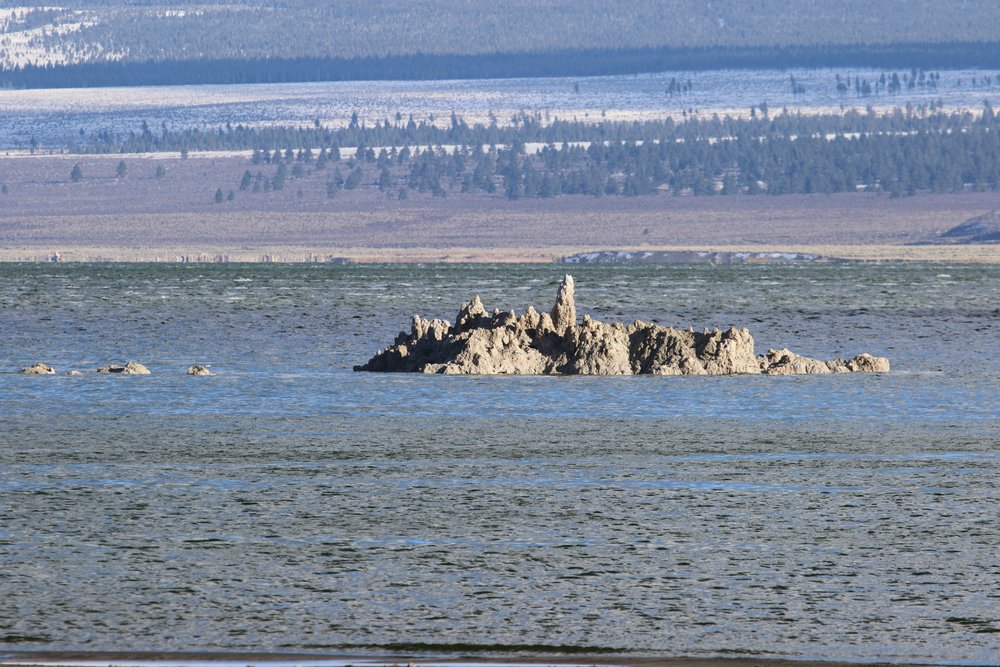
I write this sitting in the town of Pahrump, outside of Las Vegas. So this is a rich perch from which to think about gambling. I always say I’m not a gambler—I’ve bought a Lotto ticket or two but I wouldn’t know what to do in a casino. Yet the truth is, we all gamble all the time—when we decide to take this job and not that one. When we decide to go to dinner with this person we will fall in love with and not that person. If you leave money out of the definition of gambling, replace it with, for instance, birds, then it reads like this: playing games in order to find birds. I gamble in this way all the time.
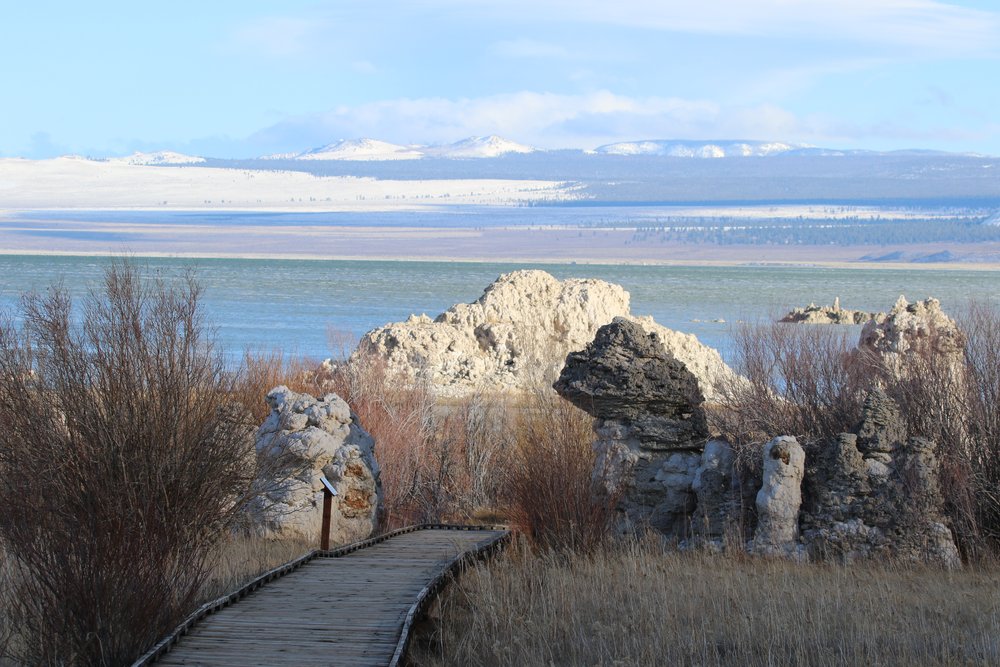
When I left my motel in Lee Vining, California, I wasn’t thinking about gambling on birds. I was revisiting the past. In 1980 I hitch hiked with Michael, my boyfriend at the time, to Lee Vining. We camped by the tufa towers of Mono Lake and dreamt of the summer to unfold before us rock climbing on the granite domes of Tuolomne Meadows. I am a bit haunted by that summer, the one I refer to as “the best summer of my life.” And it began in Lee Vining. I wanted to walk through a piece of that past.
As I strolled down a creek side trail I soon snapped out of my daydreaming. A Dipper could be frequenting this stream, I realized. And so I went on high alert, in hopes that one of these gray, cheerful birds would sing for me. The Dipper, often called the Water Ouzel, was John Muir’s favorite little caroler, and in his day, not a stream in the Sierras was without one of these songsters. I scanned the water, knowing a Dipper bobs about, but in general presents as gray on gray, as polished as the rocks in the stream.
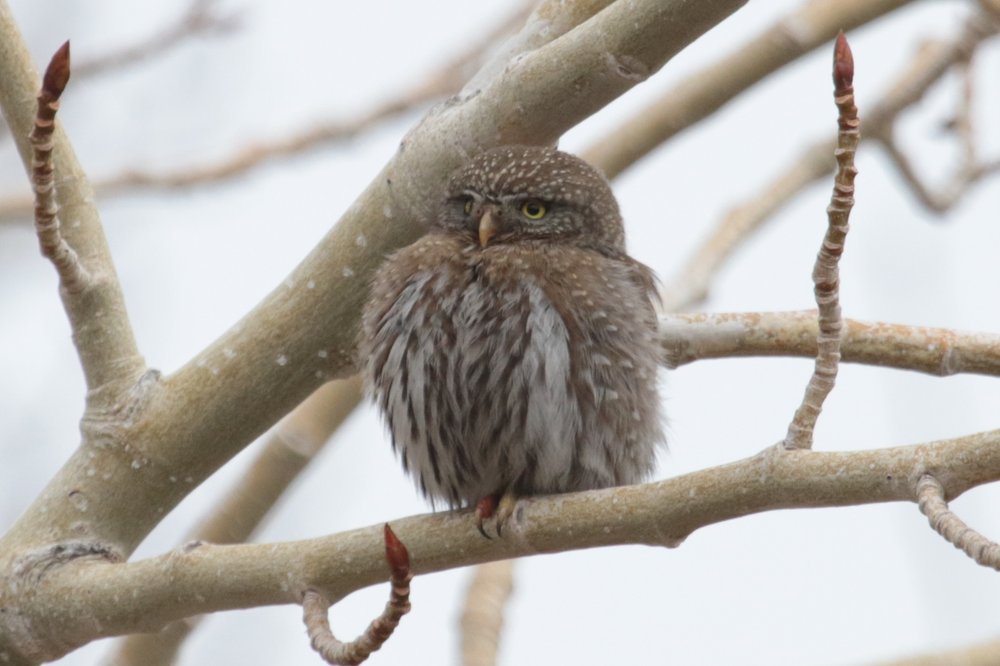
As I looked for the Dipper, it made me focus outward and I started to see the lovely small canyon: sandy soil, running water, rock outcroppings. Not part of my memories, but more beautiful. And as I admired the world, I noticed a…Christmas tree bulb in the tree. I pulled up my binoculars and looked at the round, speckled little owl. A Northern Pygmy Owl. I stopped. The owl swiveled its head, showing its large “eyes” on the back of its head, then turned to look at me again. It sat, nonchalant, unaware how it had cheered my day.
After spending time with the owl, I bid him goodbye on his happy perch and continued on. Soon after, I heard the song of the Dipper, a musical medley that rose above the movement of the creek. I scanned the water for this joyful little bird, and found him bobbing in the creek.
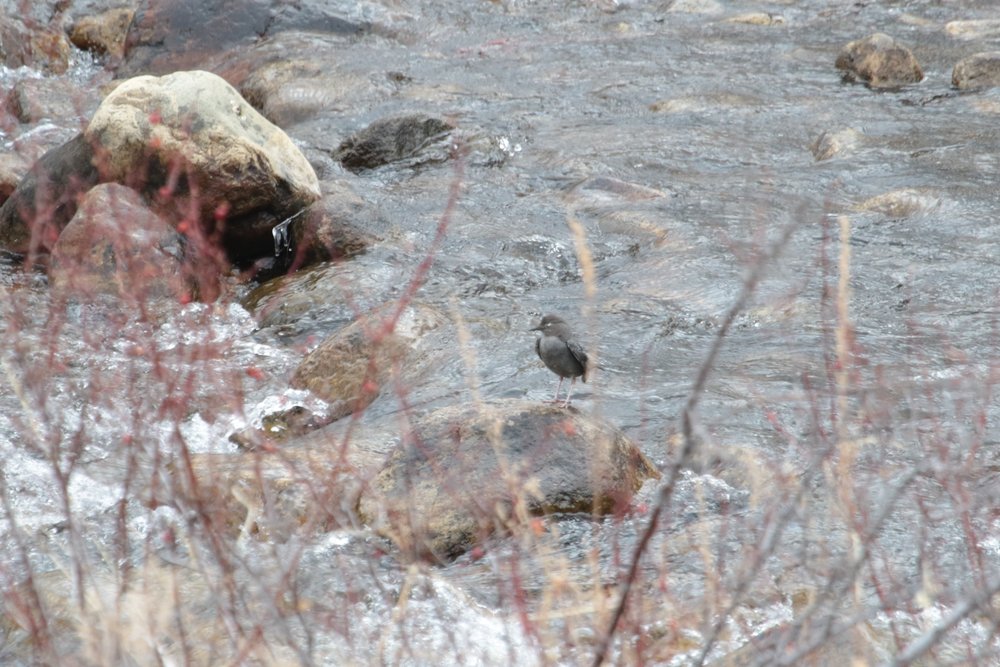
I had not gambled, and yet I’d still won. Maybe I should gamble on not gambling. I often feel as if the birds I stumble on are the most special—special because I saw them and special because so utterly unexpected. Unexpected, just like the adventures of that summer spent in Tuolomne in 1980.
Bad Water, Beautiful Flowers
One guide for Death Valley writes that people go to National Parks to get away from the stress of the outside world. And then they come to Death Valley to get away from the crowds of the other National Parks. I’ll agree to the first statement, but not to the second. When I hiked Theodore Roosevelt Park I saw no one in five hours; at Crater Lake, I snow-shoed out alone. In Death Valley: lines of cars waited in the lot so that people could park then saunter out below sea level and experience the frying relentless sun. Caught unaware, everyone turned some shade of sweaty pink. In March. In the campground my little tent wedged between two RVs, the couples cheerfully grazing their way through retirement in the National Parks. “What’s not to love?” one said, sweeping a hand toward the horizon. What’s not to love? That there are no birds.

One guide for Death Valley writes that people go to National Parks to get away from the stress of the outside world. And then they come to Death Valley to get away from the crowds of the other National Parks. I’ll agree to the first statement, but not to the second. When I hiked Theodore Roosevelt Park I saw no one in five hours; at Crater Lake, I snow-shoed out alone. In Death Valley: lines of cars waited in the lot so that people could park then saunter out below sea level and experience the frying relentless sun. Caught unaware, everyone turned some shade of sweaty pink. In March. In the camp ground my little tent wedged between two RVs, the couples cheerfully grazing their way through retirement in the National Parks. “What’s not to love?” one said, sweeping a hand toward the horizon. What’s not to love? That there are no birds.
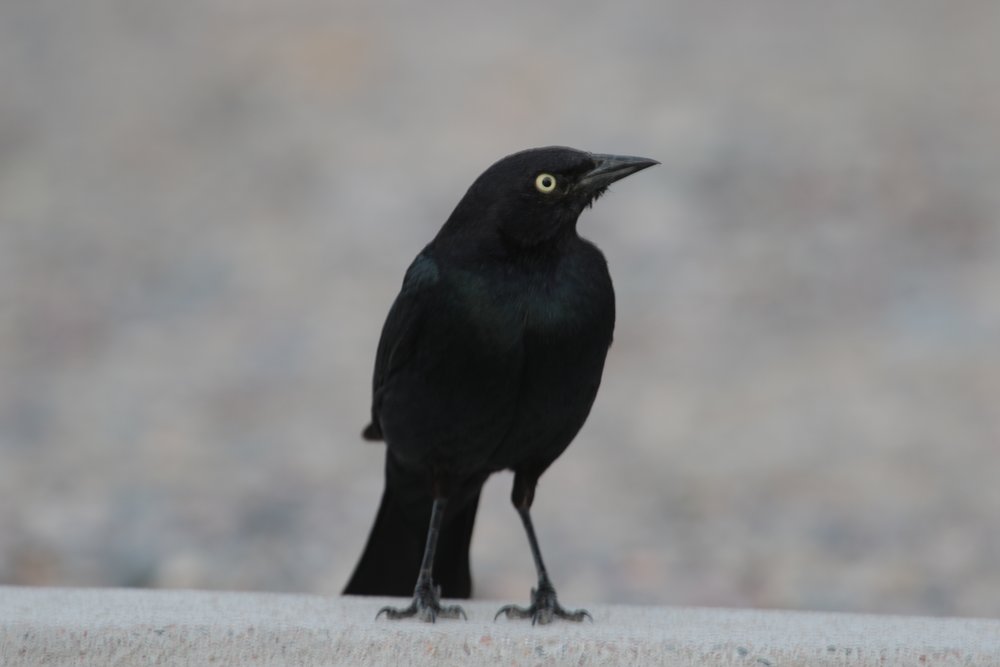
Ok, there were a few birds. The Brewer’s Blackbird, a cousin to my favorite, the Rusty (yes, I have a favorite and it’s an easily overlooked, un-colorful, tuneless fellow) came skidding in a flock to my tent the minute I set up no doubt looking for a handout. A long-tailed Grackle sang its cranky song atop a tree, pointing its bold black beak skyward. I kept hoping for something surprising to show up. And what I got was a Pipit tip-toeing its way along one of the rare little creeks, this one salty with a population of Pupfish eeking out their tough fish lives. But a land that doesn’t hold an abundance of birds can’t long hold my attention. And if birds know they don’t belong in Death Valley, then neither do we?
Death Valley is a park you drive, viewing the natural world from the inside of an air-conditioned car. Everyone raced (literally—I puddled along at 45 miles an hour and everyone zoomed past me, as if we were in downtown LA) from one sight to the next: Bad Water, Artist’s Palette, Dante’s Lookout. And then, by the side of the road, a car pulled over and a woman with her easel, painting the landscape filled with yellow flowers, or a couple strolling out, taking selfies. The desert is in bloom. News of the bloom brought many of these people to the park, the desert in bloom high on the bucket list of one couple I spoke to. These people had driven for hours for flowers.
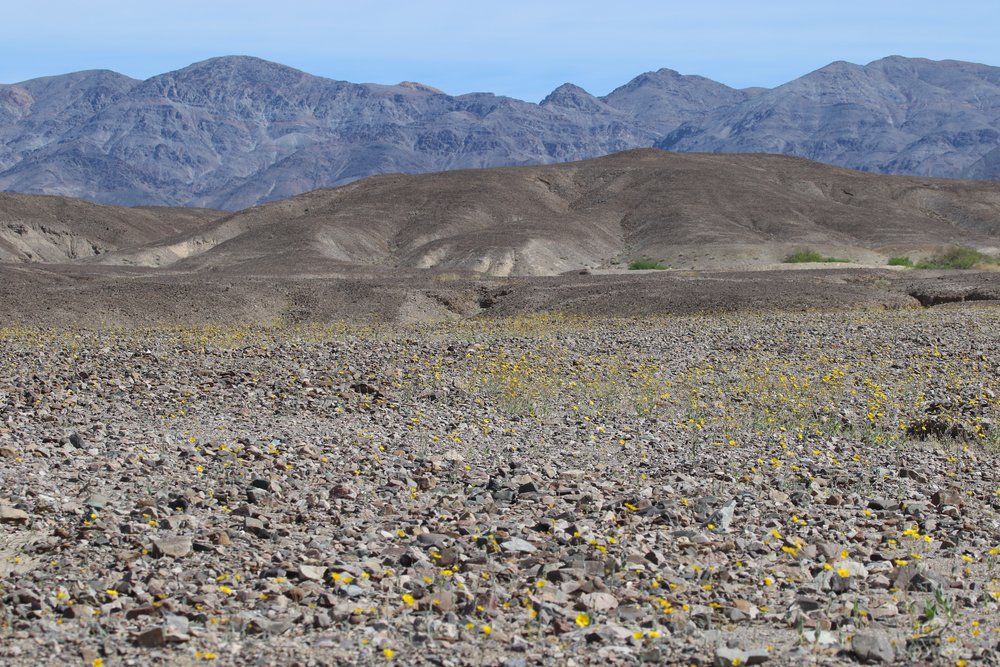
That thought floated through my head for the two days I spent in the park. Of course we see flowers all the time, out the backyard or in pots by the local bank. But flowers where they don’t belong, where they are unexpected, where they color up a vast and brown gray landscape—that is worth driving hours for. And as much as I bristled at the crowds, I also love that people are motivated to venture out, for flowers. Anything that survives in this landscape—the Grackles or the Pupfish or those short-blooming flowers—should be celebrated. I did, then packed up and left.

